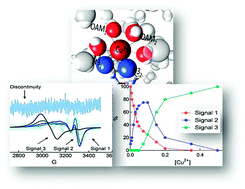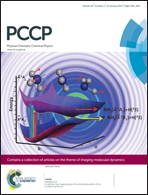Copper(ii) binding to flexible triethanolamine-core PAMAM dendrimers: a combined experimental/in silico approach†
Abstract
The structure of copper(II) complexes formed with triethanolamine (TEA) core poly(amidoamine) (PAMAM) dendrimers from generation 0 (G0) to 4 (G4) were investigated by the electron paramagnetic resonance (EPR) technique and molecular simulations. Different square planar coordination modes were detected as a function of copper(II) concentration, whose dynamic evolution relates to the high structural flexibility peculiar to this dendrimer family. Modulated by generation and solvation effects, copper(II) complexation begins at the dendrimer core and progresses to the dendrimer periphery. Differently from the ethylenediamine (EDA) core PAMAM dendrimers, the copper complexes involving the TEA core showed high mobility and saturation of the internal sites above the 1 : 1 molar ratio between the dendrimers and the ions. Therefore, by combining EPR and molecular simulations for the first time, ultimately we obtained unique information on structure, dynamics and copper interacting ability of these dendrimers which could be successfully exploited in biomedical applications.


 Please wait while we load your content...
Please wait while we load your content...